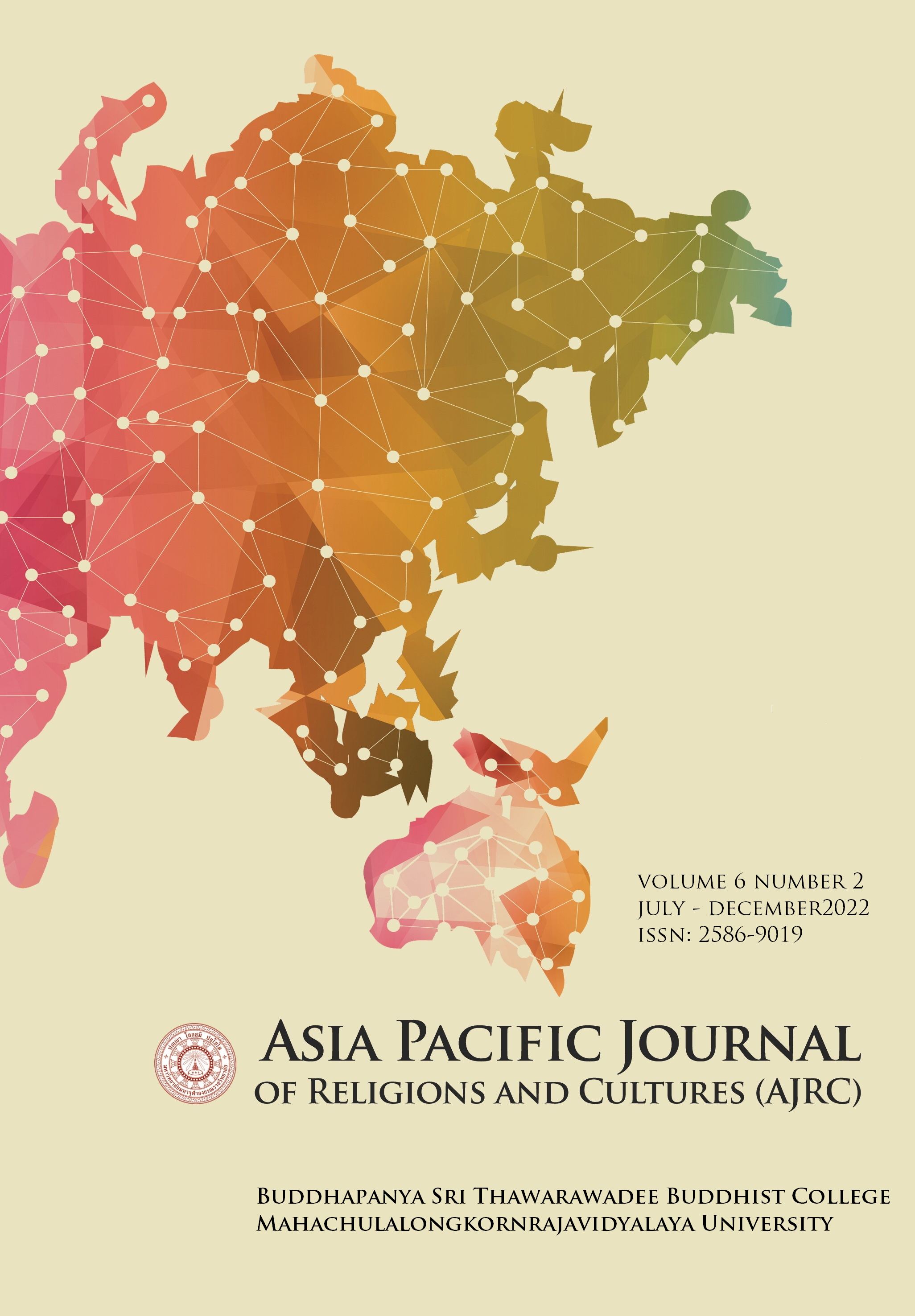DEVELOPMENT OF AESTHETIC ART LEARNING INNOVATION FOR THE NAKHON NAYOK ELDERLY SCHOOL
Main Article Content
Abstract
This research aimed at designing ecological plans, developing learning innovation aesthetic art teaching for promoting the elderly health; and proposing and analyzing location assessment, learning management, ecological plan and sets of learning for promoting the elderly health in the Nakhon Nayok Elderly School. A mixed methodology has been employed. The quantitative research used questionnaire conducted with 77 respondents while the qualitative research used in-depth interview conducted with 30 purposive sampling interviewees and 10 non-participatory observant whereas the action research was to contribute knowledge to the elders about aesthetic knowledge integrating arts and religion, practical skills and experiences, which contributed 4 dimensions of health, self-management, elderly community management and organizing Aesthetic Art Workshop pertaining 7 creative activities organized with 15 elderly students. Results revealed:
1) The ecological plan should adopt the Thai architecture responsive to the central region, with mayongchit [sweet yellow Marian plum] as a provincial leading fruit symbol. The building required consciousness for the elders, the disables and the common people’s uses, alleviating discrimination, respecting human and top self-reliance such as restrooms with bars and top security, proper lane for wheelchairs, emergent signal buttons, and lightning. Outside building had to be furnished with slope
for wheelchairs as in the Universal Design, carparks for elders, naturalized landscaping, shadiness, outdoor activities spaces for exercises and recreations with serenity and windiness.
2) Aesthetic Art Workshop included 7 activities to promote elders to understand arts to acquire happiness emerged from internal mind or called self-aestheticization. This led to samãdhi, lowering anxieties and stresses, understanding natures and acquiring 4 dimensions of health: body, mind, emotion and wisdom such as exercises of hand, arm and finger muscles. This was to increase capacity of physical strength, self-livelihood, living with dignity, self-valuing, and good relation with fellow humans, prompting to share life experiences on virtue inheritance to sibling and nephew generations amid social, political, economic, environmental and technological changes enabling to daily life practices.
3) Instructions in the Nakhon Nayok Elderly School were differently organized by context and promptness by each school. Syllabuses specified each subject period, hourly activities or recreation activities to promote their health. Practical activities were organized to cultivate their skills and experiences for sideline careers to raise income. Contents were unlikely emphasized but activities, diverse theoretical and practical curriculums and activities responsive to their needs, their body and mind happiness till the end of their lives.
Article Details

This work is licensed under a Creative Commons Attribution-NonCommercial-NoDerivatives 4.0 International License.
References
Chairat Wongkitroongruang. Quality of Life of the Elder in Rural Societies: a case of the elders in Ratchaburi Province. Research Report, Faculty of Social Science: Kasetsart University. 2017: executive summary.
Chompoonuch Bhramabhakdi. Entering in the Aging Society in Thailand. Bangkok: Office of the Academic Affairs, Office of the Secretary of the Senate. 2013, p. A).
Faculty of Associated Medical Sciences. Adjustment of Technology and Innovation to Facilitate Livelihood of the Elders. Chiang Mai University, Online. Retrieved10 July 2022 https://www.cmu.ac.th/th/faculty/associated_ medical_ sciences/course [2020]
Siriwan Aroonthipphaitoon. Policy Proposal Responsive to the Aging Societies in Thailand. Office of Promotion and Elderly Guard, Office of Welfare Promotion of Children, Youth, the Underprivileged and the Elderly, Ministry of Social Development and Human Security. 2014: Abstract.
Taksina Phphitkul. “Aesthetics and Arts: from representing images to relational aesthetics.” Journal of the Institute of Culture and the Arts Srinakharinwirot University Vol. 17 (2), (January-June 2016), p.18)
Vichai Chokvivattana, MD, trans. editor Selling Sickness: How the World Biggest Pharmaceutical Companies Are Turning Us All into Patients, by R Moynihan and A. Cassels. Bangkok: Local Physician Journal. 2010, p. 324.
Viroon Tangcharoen. Aesthetics for Life. 2nd ed. Office of Academic Resource. Chulalongkorn University. Bangkok, E and IQ 2003, pp.38-39.
Menna Allah SALAH Refai Mahmoud, Esam Aldin Mohamed Ali, Lobna Mah Moud
Moubarak, Assessment of Urban Spaces from the Perspective of Universal Urban Design. (Universal Urban Design from Theory to Practice), Journal of Engineering Sciences Faculty of Engineering Assiut University, Volume1, Number1, January 2022
Salmi Razali, Art Therapy for People with Mental Illness: Overview of the Evidence from Empirical Research on the Effectiveness of the Treatment, International Journal of Art & Design, Universiti Teknologi MARA Cawangan Melaka , Volume 5, Number 05, July 2021


